This pub stands in the shadow of Manchester Town Hall. The rapid expansion of the city and the ambitions of its civic leaders led to the creation of a municipal palace of unrivalled splendour. Completed in 1877, this civic palace was designed by Alfred Waterhouse, also responsible for several other buildings in the city. Its internal mosaic design incorporates a pattern of bees, symbolic of Manchester’s industry, which is also found on the city’s coat of arms.
A framed photograph of Alfred Waterhouse and text about The Waterhouse.
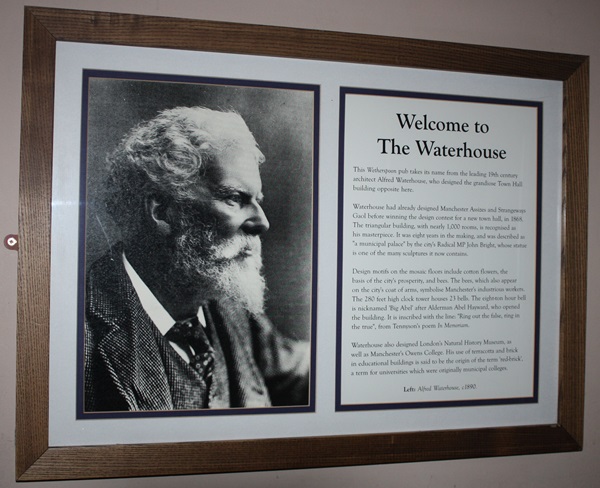
The text reads: This Wetherspoon pub takes its name from the leading 19th century architect Alfred Waterhouse, who designed the grandiose Town Hall building opposite here.
Waterhouse had already designed Manchester Assizes and Strangeways Gaol before winning the design contest for a new town hall, in 1868. The triangular building, with nearly 1,000 rooms, is recognised as his masterpiece. It was eight years in the making, and was described as “a municipal place” by the city’s Radical MP John Bright, whose statue is one of the many sculptures it now contains.
Design motifs on the mosaic floors include cotton flowers, the basis of the city’s prosperity, and bees. The bees, which also appear on the city’s coat of arms, symbolise Manchester’s industrious workers. The 280 feet high clock tower houses 23 bells. The eight-ton hour bell is nicknamed ‘Big Abel’ after Alderman Abel Hayward, who opened the building. It is inscribed with the line: “Ring out the false, ring in the true”, from Tennyson’s poem In Memoriam.
Waterhouse also designed London’s Natural History Museum, as well as Manchester’s Owens College. His use of terracotta and brick in educational buildings is said to be the origin of the term ‘red-brick’, a term for universities which were originally municipal colleges.
A Georgian staircase, discovered during renovation.
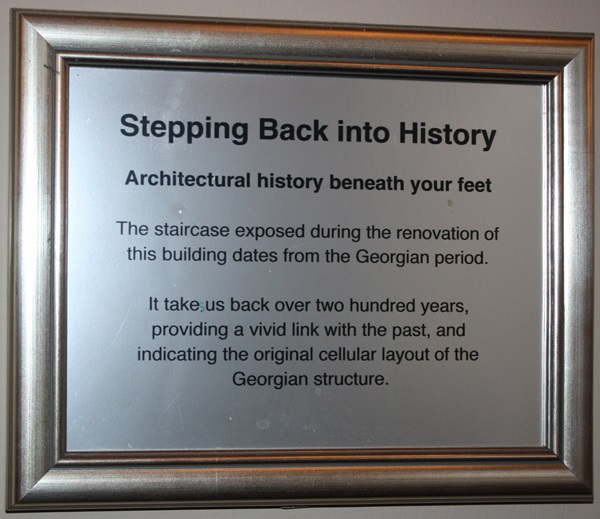
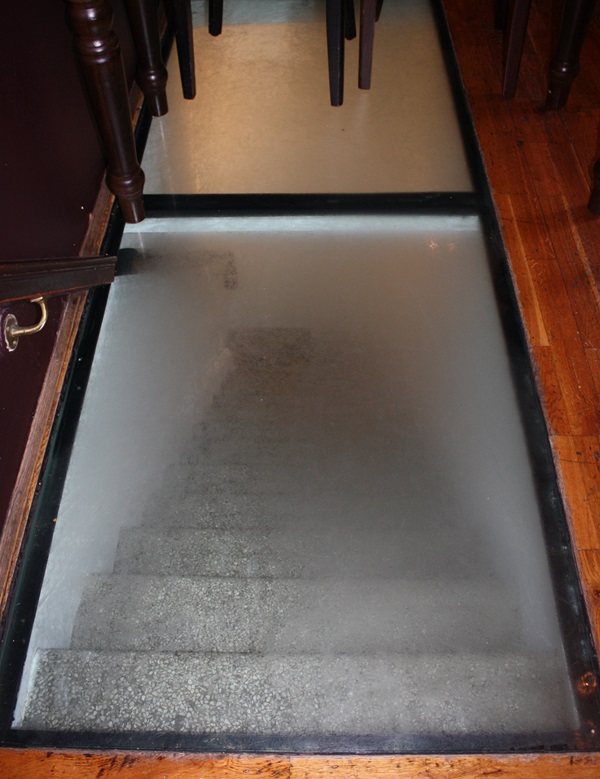
The text reads: Stepping Back into History
Architectural history beneath your feet.
The staircase exposed during the renovation of this building dates from the Georgian period.
It takes us back over two hundred years, providing a vivid link with the past, and indicating the original cellular layout of the Georgian structure.
A framed drawing of the Royal Insurance Building, King Street, 1861.
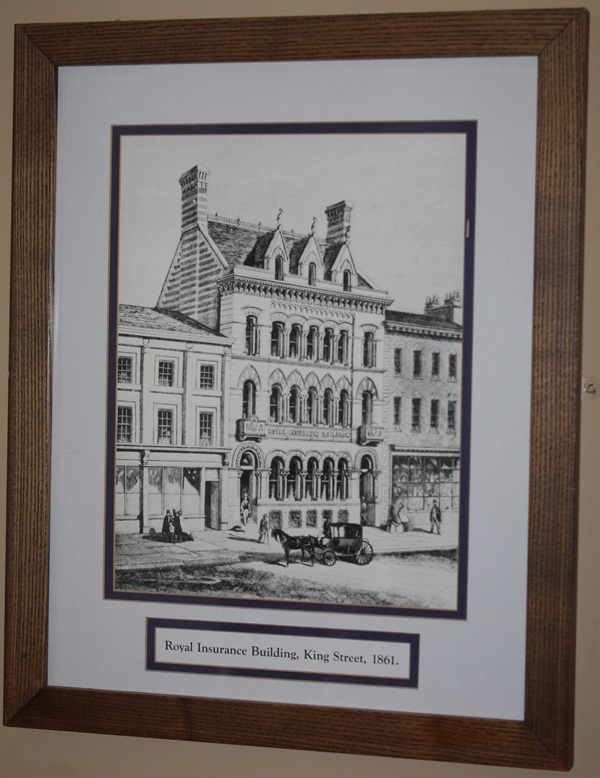
Framed drawings of Manchester & Salford Bank, Mosley Street, in 1860; also the Bank of England, on King Street, in 1845.
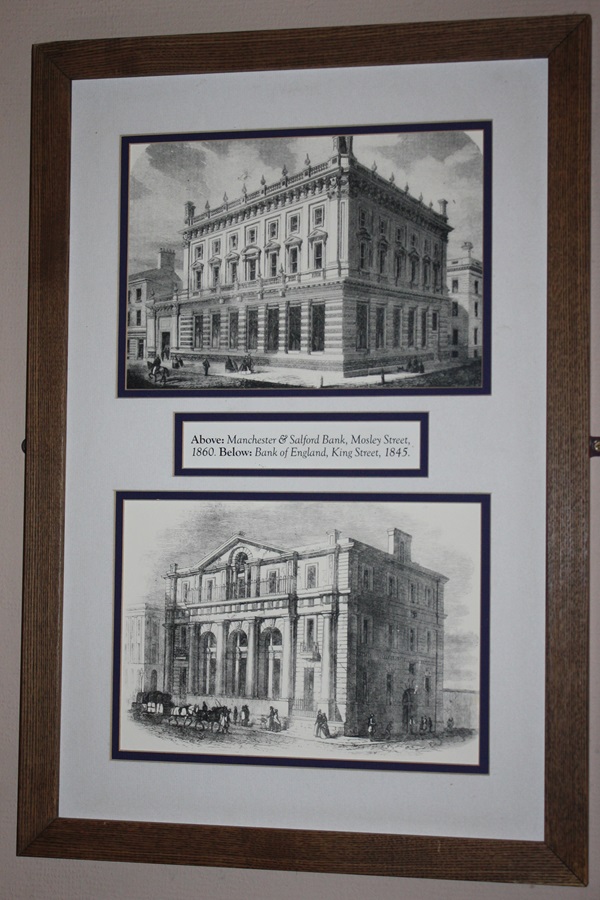
A framed drawing of City and Police Sessions Court, in 1868.
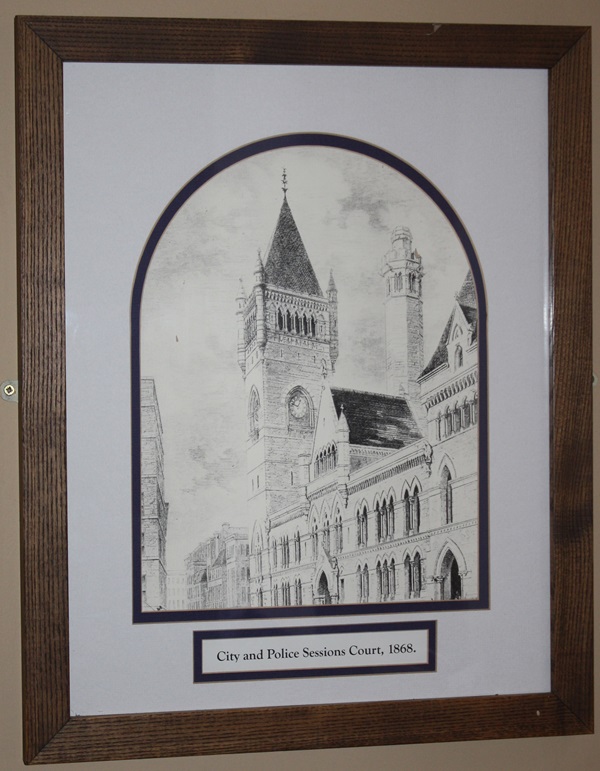
Framed drawings of the Waterhouse in Manchester, showing both the town hall and Owens College.
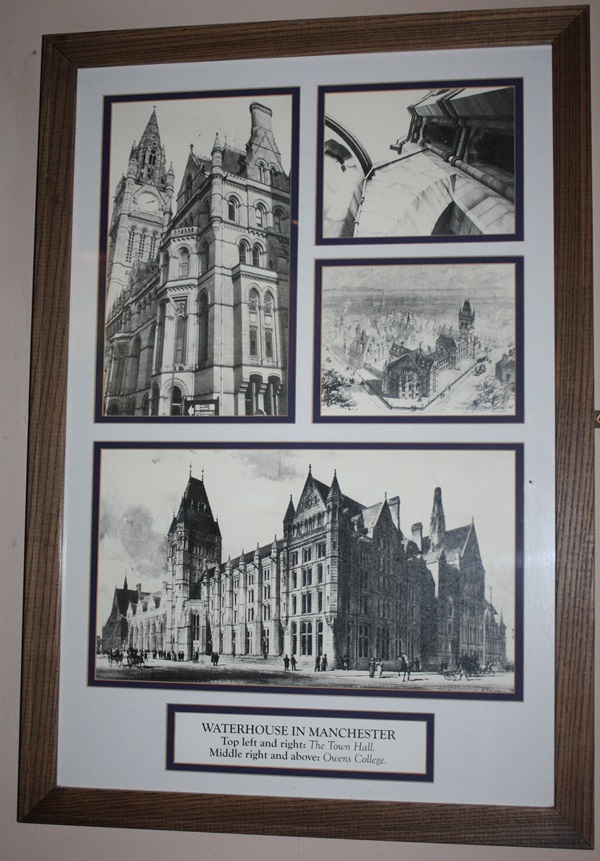
Framed drawings of Waterhouse Buildings, showing Manchester’s town hall and the Natural History Museum in London.
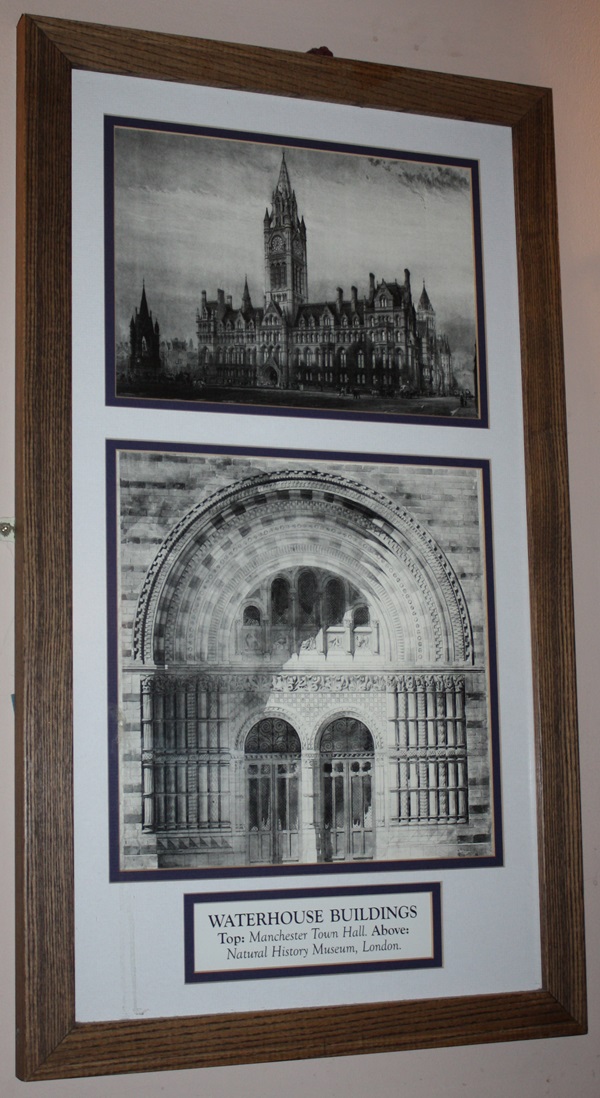
Framed drawings of the town hall.
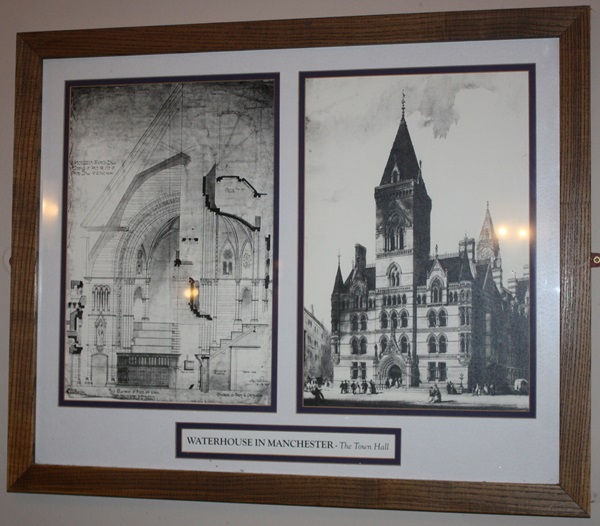
It is believed that this pub used to be an orphanage and it’s confirmed that it was a solicitor’s. These premises were made up of three town houses. There are features in the pub today which show clearly its original layout and design.
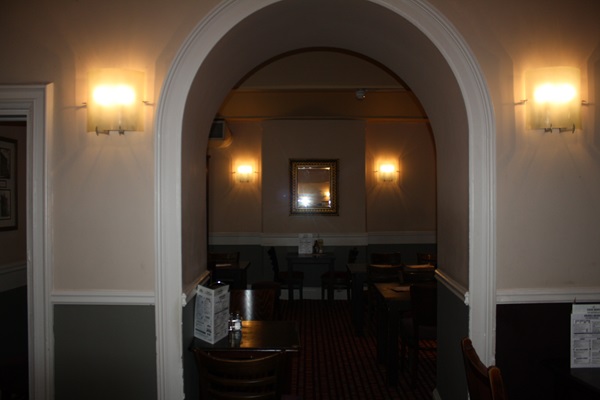
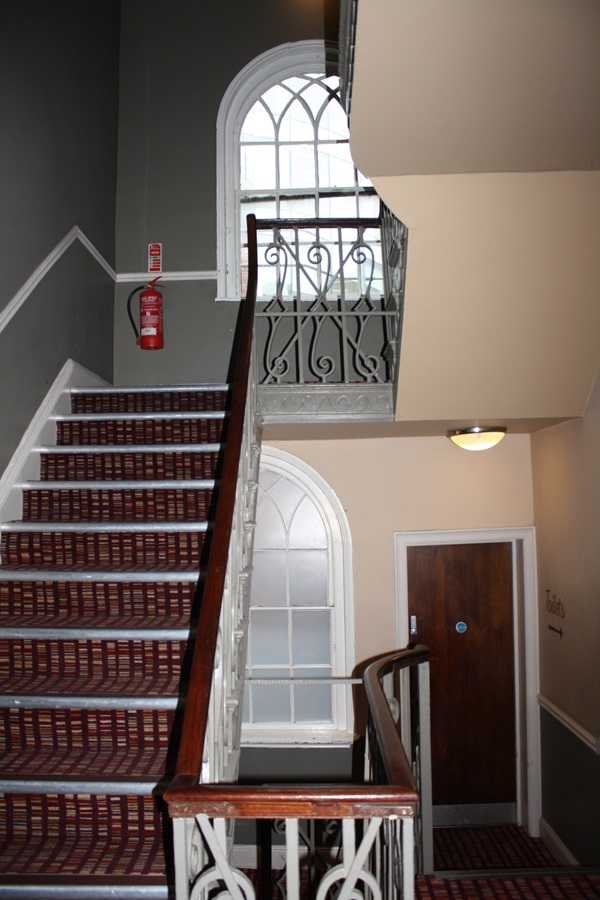
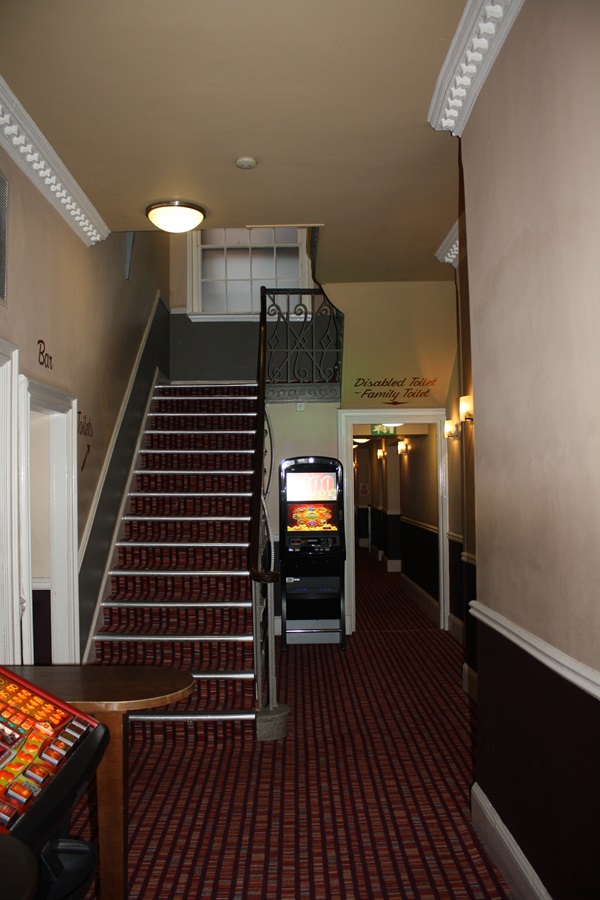
The original window frames from when the pub was used as town houses.
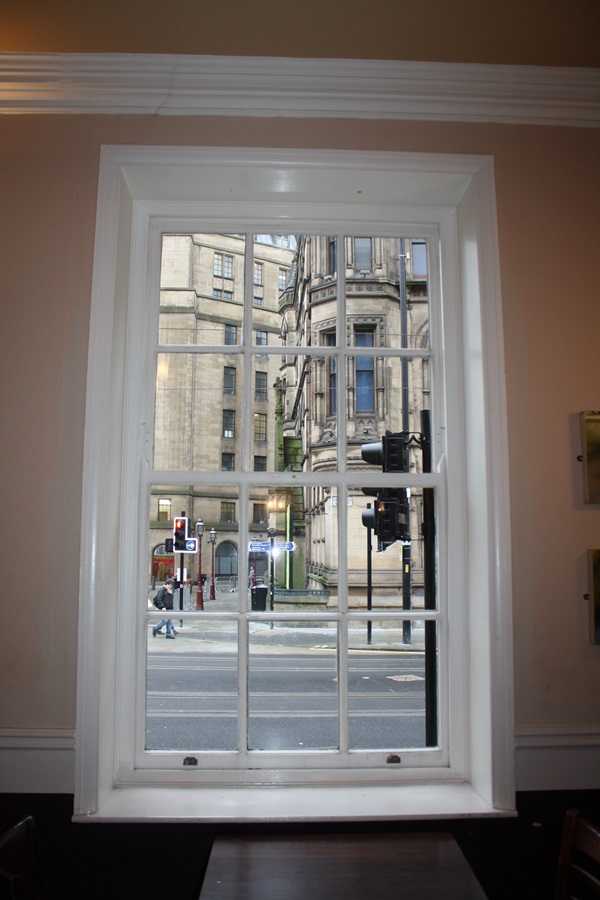
The original windows on the upper floors, now closed to the public.
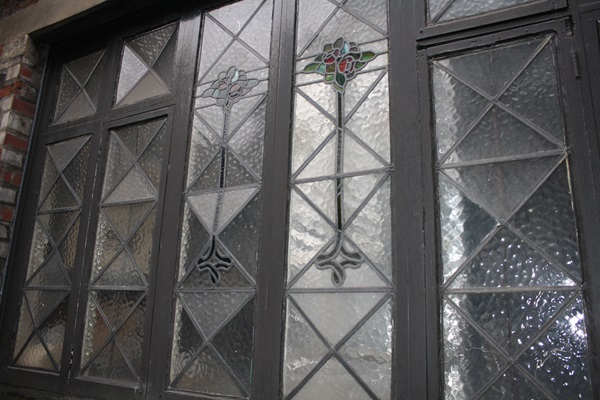
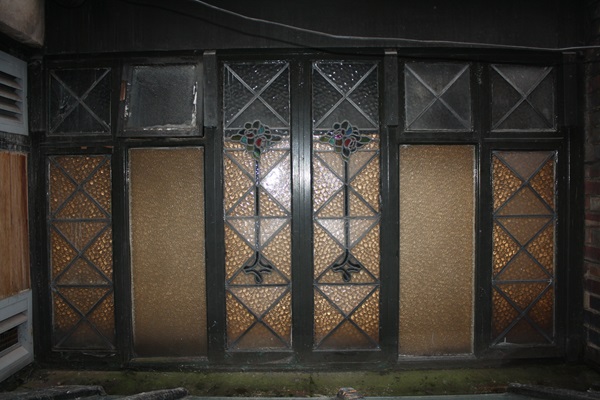
A bookshelf containing books used by the solicitors, when their business occupied the building.
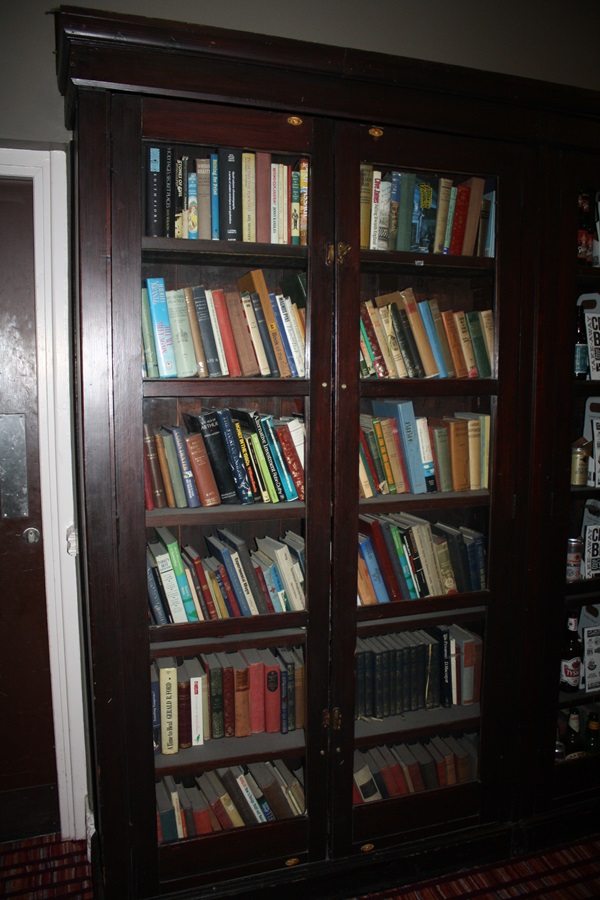
A sculpture entitled Structural Evolution, by George McGill.
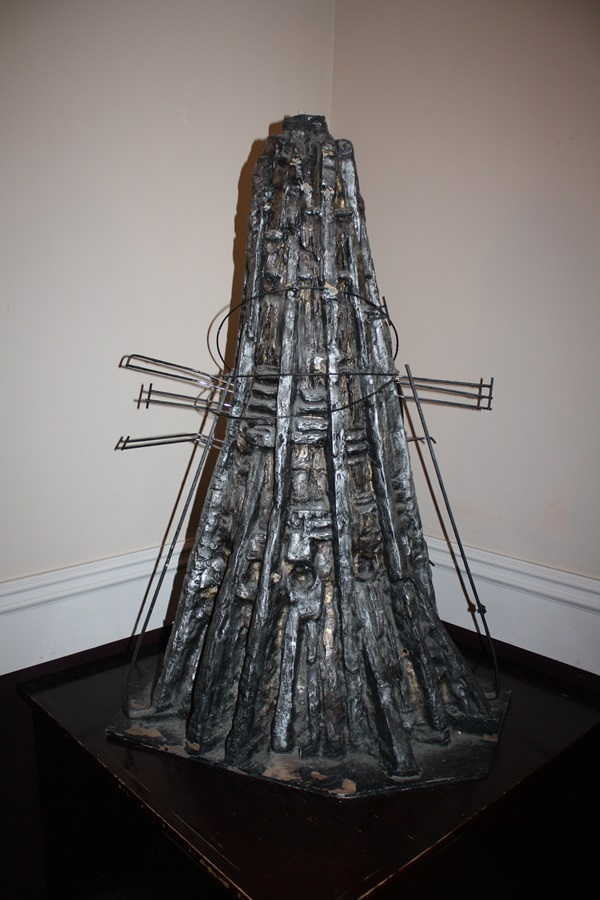
Originated in clay, cast in glass reinforced resin and wire.
The sculpture is based on the Tower of Babel in the famous painting by Pieter Bruegel.
A sculpture entitled Architecture, by Elsie Lyons.
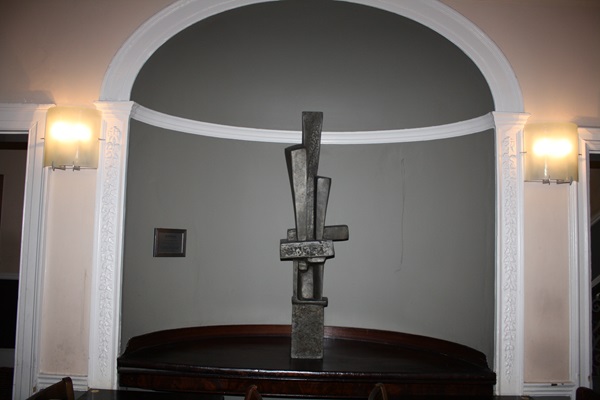
Glass reinforced resin and wire.
“Architecture is an imitation of organic growth, translating natural forms into solid masses.”
A sculpture entitled The Architect, by George McGill.
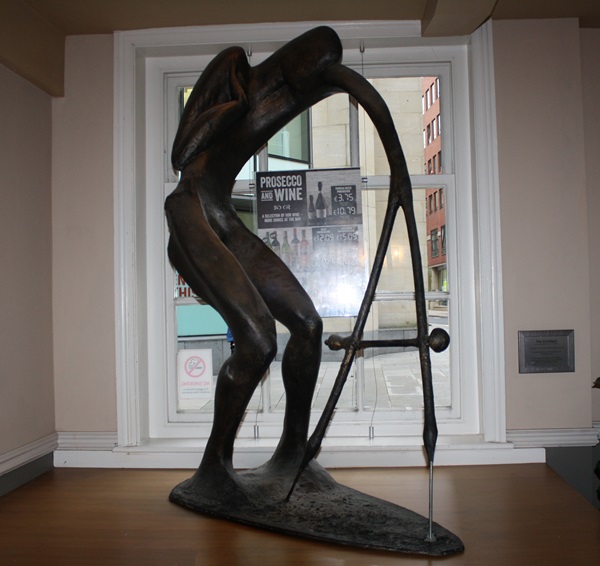
Framed art entitled Meditations on Tao, 1993.
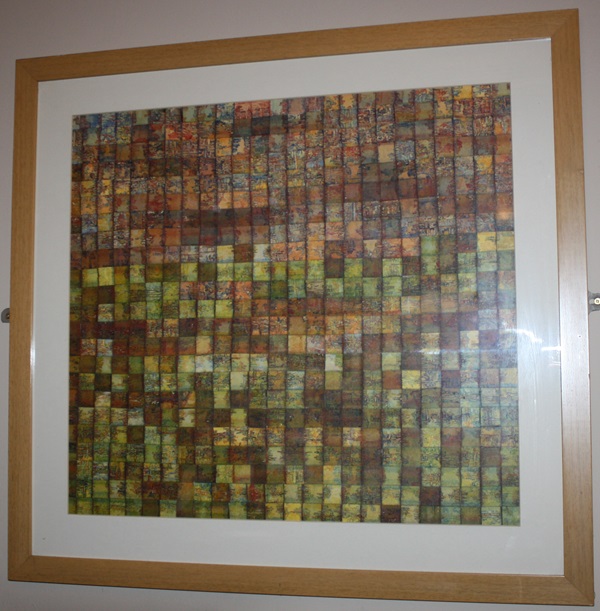
The collage was created out of pigment, glue and tape, by Janet Oliver.
An external photograph of the building – main entrance.
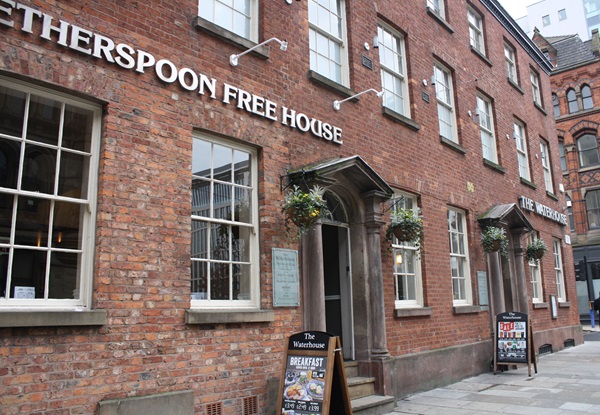
If you have information on the history of this pub, then we’d like you to share it with us. Please e-mail all information to: pubhistories@jdwetherspoon.co.uk